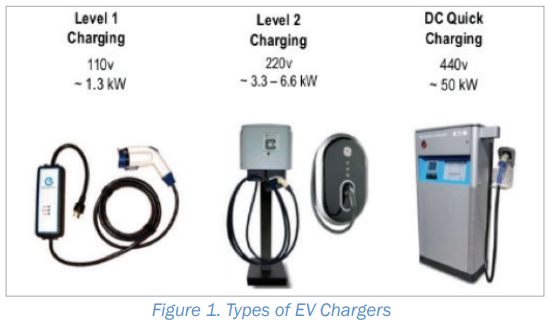How Electric Vehicle Charging Technology Holds the Key to Global Adoption
Driven by environmental and sustainability concerns and increasing clean air legislation, the de-carbonization of automobiles and other transportation is gaining rapid momentum. As electric vehicle (EV) technology advances, the viability of the technology versus traditional internal combustion engine (ICE) powered vehicles is increasing. Also, the choice of models available to more environmentally aware and savvy consumers is growing as manufacturers fill out their ranges with more EVs.
As society accepts and adopts EVs, the charging infrastructure needs to grow in parallel. The scale, performance and sophistication of this growth needs to keep pace with the rate of EV adoption, or ideally stay ahead of the curve in order not to inhibit proliferation. If prospective buyers see potential issues in keeping their cars charged and on the road when they need them, they may not make the switch.
Range anxiety is recognized as one of the main potential issues that could slow adoption. Therefore an extensive and high-performance charging infrastructure coupled with cars that are more frugal in terms of their power use is of significant importance and would open the door to consumers’ dependable and seamless travel. Chargers themselves must be robust systems, designed for both safety and reliability.
Many EV users choose to charge their vehicles at home, but the vast majority of consumers will require charging stations located away from the home to ensure their cars are a practical replacement for fossil-fuelled vehicles. The main requirements for these remotely located chargers are that they are both fast and convenient.
As of May 2019, there were 68,000 level 2 and fast DC charging units throughout the US. Of that total, 16% or just under 11,000 units, were DC fast chargers. Fast chargers are more practical and support EV customers who make long-distance journeys.
EV Charger Levels and Types
The EV chargers of today fall into three main categories, separated mainly by their power level. Level 1 and 2 chargers are compatible with residential use and can deliver up to 6.6kW of charging power, making them capable of charging the average EV in about four to eight hours. The much larger DC quick chargers are only available at commercial locations that have access to three-phase power from their local utility provider, these systems can add more than 100 miles or more of range to an EV battery in just 30 minutes, as opposed to taking hours (which would be entirely impractical for most users). These three types are shown in figure 1.
A DC fast charger adds 60 to 80 miles of range per 20 minutes of charging time, while a level 2 charger adds just 10 to 20 miles of range for an hour of charging time.
Currently, there are over 25 major manufacturers of EV chargers with many more entering the market each year due to the significant and growing market opportunity. This interest and competition is helping to drive innovation and accelerate the development of better solutions. A list of some of the major players is shown in figure 2.
Some manufacturers produce only level 1 and level 2 type systems, while many others produce systems of all three types. Within the different EV charging designs, there are various standards applied which include different vehicle-to-charger communications protocols and several different charger interface connector designs. These can be seen in figure 3.
The utilization of public chargers is arranged in various ways. Some charging stations are offered free-of-charge, some require that the client be a member of a network for access, others meanwhile offer a ‘pay-as-you-go’ payment option.
What onsemi Is Doing
onsemi super-junction MOSFETs, IGBTs, SiC devices and power integrated modules (PIMs), along with the company’s gate drivers, sensing, control and peripheral power products provide a complete system solution for electric vehicle charging systems of all types and power levels.
Ultimately, the full acceptance and success of EVs is intrinsically linked to charging infrastructure and technology. When the range of EVs is equal to or greater than that of fossil-fuelled cars and chargers can take a depleted battery back to full charge in a similar time to that taken for conventional refueling, then the ICE vehicle will be consigned to history. Comment below and tell us your thoughts on the future of the sustainability of EVs. Don't forget to subscribe and continue the conversation on topics like this and others with onsemi.



